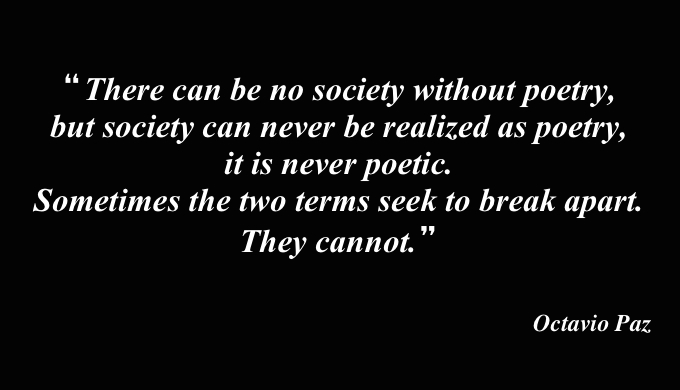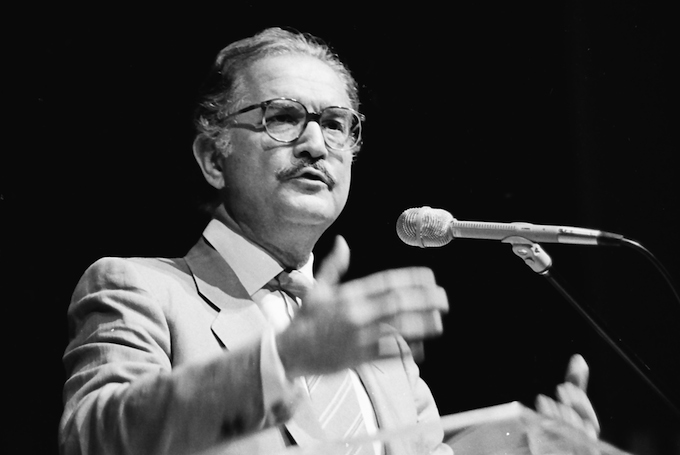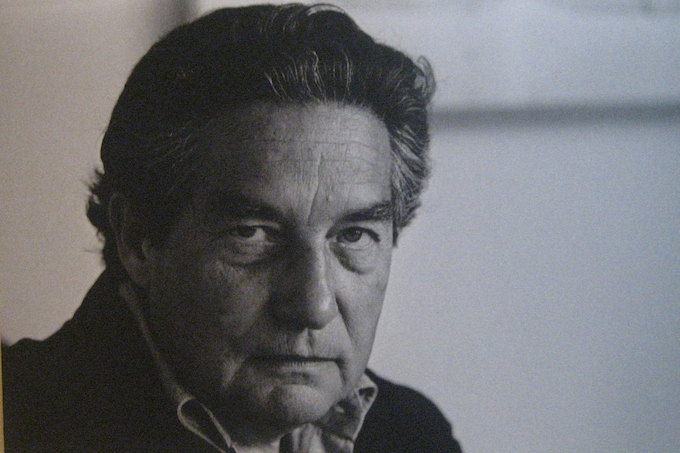The Literature Nobel Prize winner’s 100th birthday gives an opportunity to reflect on his exceptional life and his close ties to France.
When Octavio Paz was born in Mexico on March 31, 1914 to a family of Spanish-Mexican intellectuals, he came equipped with a set of literary and political genes. His grandfather was a novelist, journalist, and left-wing thinker, his father a lawyer and supporter of the revolutionary Anti-Diaz regime. Small wonder then that young Octavio enjoyed a politically and artistically coloured education that would eventually set him on his path to becoming one of the 20th century’s greatest writers and diplomats.
Having been introduced to the great works of European and Mexican literature early on, and studying English and French at school, Octavio still first decided to embark on a career in law. He abandoned his studies though in favour of teaching, and gradually ventured more and more into writing. Drawing on D.H. Lawrence’s influence, he published his first poems and subsequently founded a literary journal. 1933 witnessed the publication of his first collection of poems, Luna Silvestre, modeled on the style of American poet T.S. Eliot.
{youtube}m_xB2WfXG2A?rel=0{/youtube}
Octavio Paz, whose last name translates to “Peace”, showed first political aspirations when at the height of the Spanish Civil War he was invited to the Second International Writers Congress in Defense of Culture in Spain in 1937. During that time, Octavio also visited Paris for the first time, which left an indelible impression on the 23 year old, as he told the Paris Review in an interview in 1991:
Paris was a museum; it was history; it was the present. Walter Benjamin said Paris was the capital of the nineteenth century, and he was right, but I think Paris was also the capital of the twentieth century, the first part at least. Not that it was the political or economic or philosophic capital, but the artistic capital. For painting and the plastic arts in general, but also for literature. Not because the best artists and writers lived in Paris but because of the great movements, right down to surrealism.
Upon his return to Mexico a year later, he kept writing and publishing but his works had increasingly more political undertones. Themes often revolved around art and society as a juxtaposed but inalienable entity:

A 1944 Guggenheim Fellowship took Octavio Paz to New York and San Francisco to study Spanish American poetry. His increasing understanding of the differences between North American and Mexican cultures would ultimately lead him to write his most famous book, The Labyrinth of Solitude, in 1950 – an analysis of the Mexican character and and an interpretation of Mexican history and its influence on the Mexican psyche.
First though, Octavio Paz joined Mexico’s diplomatic corps in 1945, and over a 23 year span he would serve at posts in France, Japan, Switzerland, and India, among others.
His first mission to France from 1946 to 1951 would prove to be life-altering. It was there that he was introduced to Sartre, Breton, Camus, and other French thinkers, who were to become an important influence on his own work. One Parisian writer in particular caught his attention, Roger Caillois, with whom he also became close friends, and both mutually drew inspiration from each other’s works.
One of his Mexican compatriots he met in Paris was writer Carlos Fuentes (pictured below) who wrote about his memories of the two men’s lifelong friendship:
“I met Octavio in Paris, in April of 1950, when I was 21 and he 35. We immediately became friends. I had come from Mexico filled with an admiration for him nurtured by my reading of, first, “The Labyrinth of Solitude” and, immediately after, “Libertad bajo palabra” (“Freedom on Parole”). Those two books were the baptismal waters of my generation.”

He goes on to talk about Paz’ vision to “reconcile Mexico with the rest of the world, as had writer Alfonso Reyes before him. “Reyes: “Let us be generously universal in order to be usefully national.” Paz: “For the first time in our history, we are the contemporaries of all men.””
The young Paz whom Fuentes met in Paris in 1950, wanted to live poetically. He suffered under the weight of his diplomatic obligations, but he carried them out in disciplined fashion.
“Together we explored the Paris of our youth, a capital externally untouched by World War II but with persistent penury in the things of everyday life–heat, light, telephones, gasoline.”
Octavio’s apartment on Avenue Victor Hugo would become a kind of salon for French, Spanish, and Latin American intellectuals and artists. It was the post-war decade, the heady era of Juliette Greco, Albert Camus, and Luis Buñuel…but also that of great turmoil social and political back home in Mexico.
So close to French culture, it was only natural that when Octavio resigned from his governmental service in 1968, he and his French wife Marie-José Tramini returned to Paris for a long while before eventually moving back to Mexico to spend their remaining years.
Octavio’s years in France and the encounters with authors, thinkers, and artists formed his outlook on the world, his political stance, and his writing. His diplomatic career, but also complications in his personal life, would eventually take him to many more countries around the world. His body of writing, ranging from poetry to stories, novels, essays, novels, and lectures, kept growing and growing, forever informed and influenced by the environment, society, and culture he lived in. He would be awarded the most prestigious prizes in Literature. He cared greatly about Mexico’s strife and future. But from the time of his first visit to his death in 1998, France never left his heart again.
{youtube}La-F0pSOUc0?rel=0{/youtube}
On the occasion of Octavio Paz’ centennial birthday, the special bond he had with France throughout his life will be remembered in a “Saison de Nobel” soirée at the Maison Amerique Latine in Paris on April 1, with a Spanish and French reading of the poem “Blanco” by actors Leticia Gutierrez and Marc Duret.
Lead image courtesy Diario de Cultura; photo of Carlos Fuentes by MDCarchives on Wikimedia Commons, licenced under CC BY-SA 3.0 licence




Leave a Reply